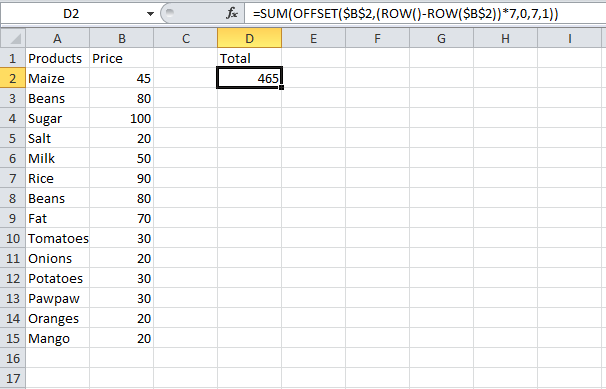

Transposing tables is just one of many features Excel has to manipulate your spreadsheet. This step-by-step guide shows how easy it is to rotate a table so that your rows become columns and vice versa. That’s all you need to remember to start transposing your data in Excel. PivotTables make it easy for you to select which fields you want to view as either rows or columns. It’s also better to use a PivotTable if you intend to frequently change the way you want to see your data. Transposing is best used if you only intend to switch two variables as rows and columns.
How to add multiple rows in excel formula update#
If your data includes formulas, Excel will automatically update them to match the new placement of each cell. What happens if my table includes formulas?.Hit the Enter key to return the transposed table.You can make your own copy of the spreadsheet above using the link attached below. To get the values in row 8, we used the following formula: =TRANSPOSE(FILTER(A2:A6,A2:A6<30)) We then used the TRANSPOSE function to convert the vertical range into a horizontal range. In the example below we used the FILTER function on the range A2:A6 to get the values less than 30. The TRANSPOSE function can also be used with other formulas. To get the values in the second column, we just need to use the following formula in cell G1: =TRANSPOSE(A1:E13) Each row now corresponds to a product name and each column refers to a month. The second table is a rotated form of the first table’s data. The first table has each row correspond to a different month, while each column corresponds to a product name. In the example below, we have two tables with the same data. This involves generating an array for the MATCH() function by pressing the keys CTRL + SHIFT. Let’s take a look at a real example of transposition being used in an Excel spreadsheet. There is another approach that eliminates the use of helper cells.
How to add multiple rows in excel formula how to#
Let’s learn how to transpose a table ourselves in Excel and later test out the function with actual values.Ī Real Example of Using the TRANSPOSE function If you find that it makes more sense to rotate a table so that the rows are columns, you should try transposing the range. This means that you can make changes to the original table and have it reflected in the transposed copy created by the function. The TRANSPOSE function, on the other hand, is dynamic. The Paste Transpose option is helpful if you want to quickly convert a table to its transposed form. We can use either the Paste Transpose option and the TRANSPOSE() function to do this task. You’ve received an instruction that your manager prefers that each column should be a different month, with the categories being arranged per row. Each row corresponds to a month and each column corresponds to a particular category of items.
/excel-multi-cell-array-formula-cb0087940d50495480a4a914599fbb43.jpg)
You have a range of values that correspond to monthly sales. Let’s take a look at a quick example where we can transpose a range.
:max_bytes(150000):strip_icc()/2018-02-25_15-27-43-5a932c88ff1b7800370375cd.jpg)


 0 kommentar(er)
0 kommentar(er)
